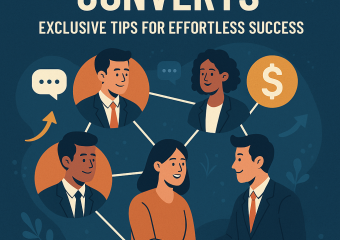Maximizing Customer Engagement: Implementing a Personalized Follow-Up System
In today’s competitive business landscape, customer engagement has become a crucial aspect of building and maintaining successful relationships with clients. Engaging customers not only helps in retaining them but also in attracting new ones through positive word-of-mouth and referrals. According to a study by Gallup, fully engaged customers represent a 23% premium in terms of share of wallet, profitability, revenue, and relationship growth compared to the average customer. This highlights the importance of customer engagement in driving business growth and success.
One effective way to maximize customer engagement is by implementing a personalized follow-up system. Personalized follow-ups show customers that you value their business and care about their needs, leading to increased loyalty and satisfaction. A study by Accenture found that 75% of consumers are more likely to buy from a retailer that recognizes them by name, recommends options based on past purchases, or knows their purchase history. This demonstrates the power of personalization in building strong customer relationships.
There are several benefits to implementing a personalized follow-up system. Firstly, it helps in building trust and credibility with customers, as they feel valued and appreciated when they receive personalized communication. This, in turn, leads to increased customer loyalty and repeat business. Secondly, personalized follow-ups allow businesses to gather valuable feedback from customers, enabling them to improve their products or services based on customer preferences and needs. Lastly, personalized follow-ups can help in upselling and cross-selling opportunities, as businesses can recommend relevant products or services based on customers’ past purchases or preferences.
When implementing a follow-up system, it is important to have a well-defined strategy in place. Firstly, businesses should segment their customers based on their preferences, behavior, and purchase history to ensure that follow-ups are tailored to each customer’s needs. This can be done through customer relationship management (CRM) software that allows businesses to track customer interactions and preferences. Secondly, businesses should use a mix of communication channels such as email, phone calls, and social media to reach out to customers and engage with them effectively. This multi-channel approach ensures that customers are reached through their preferred communication channel.
To maximize customer engagement through personalized follow-ups, businesses can follow some key tips. Firstly, businesses should personalize their communication by addressing customers by name and referencing their past interactions or purchases. This shows customers that they are valued and not just another number. Secondly, businesses should follow up in a timely manner after a purchase or interaction to keep the conversation going and maintain top-of-mind awareness. Thirdly, businesses should listen to customer feedback and act on it promptly to show customers that their opinions are valued and taken seriously. Lastly, businesses should continuously analyze and optimize their follow-up system to ensure that it remains effective and relevant to customers’ needs and preferences.
In conclusion, maximizing customer engagement through a personalized follow-up system is essential for building strong relationships with customers and driving business growth. By implementing a well-defined strategy and following key tips, businesses can effectively engage with customers and create a positive and memorable experience that leads to increased loyalty, satisfaction, and revenue. As the business landscape continues to evolve, personalized follow-ups will play a crucial role in differentiating businesses and creating a competitive advantage in the market.







